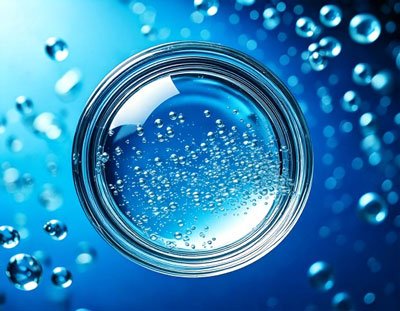Acuity 200 – Welcome to the World of GP Materials
Courtesy of Dr. Trevor Fosso, OD, FAAO, FSLS, PineCone Vision Center.
In the world of optometry, few things blend science and art as seamlessly as gas permeable lenses.
From mastering the physics of optics to precisely mapping the cornea or scleral for a perfect fit, these lenses require both technical expertise and craftsmanship. While much attention is given to the evolving designs and technology of GP lenses, the nuances of GP materials can often be overlooked.
The first GP lenses that succeeded PMMA provided better oxygen permeability, though their Dk values remained relatively low. Over the following decades, advancements in material technology led to the development of high-Dk and eventually hyper-Dk materials. The first of these materials, paflufocon D (HDS 100, Dk = 100) was introduced in 1993, followed by tisilfocon A (Menicon Z, Dk = 181) in 1996, hexafocon A (Boston XO, Dk = 100) in 2000, roflufocon E (Optimum Extreme, Dk = 125) in 2004, and hexafocon B (Boston XO2, Dk = 141) in 2007.
Thanks to their high oxygen permeability, early hyper-Dk materials became particularly desirable for scleral lenses, especially in cases involving compromised or delicate corneas, such as corneal transplants. They were also favored for orthokeratology, as they enhanced oxygenation while patients wore their lenses overnight. Despite the benefit of increased oxygenation, practitioners soon realized the difficulties of these materials. Issues of poor surface wettability plagued practitioners and patients alike, resulting in poor vision, comfort, and deposit resistance. And compared to lower-Dk materials, which could last patients years to decades, earlier hyper-Dk materials scratched and flexed more easily leading to unpredictable over-refractions, variable vision, and more frequent lens replacement.
While surface wettability and lens durability have improved with newer hyper-Dk materials, past experiences have restricted their full acceptance among all GP practitioners. With the emergence of Tangible-Hydrapeg (THP) in 2016, the addition of this coating to many materials significantly enhanced surface wettability. Improving visual stability and lens comfort for patients across multiple lens modalities, THP seemed to solve the problem of surface wettability for hyper-Dk materials. But some patients, typically those with severe ocular surface disease, still struggled with surface wettability, seemingly burning through the THP coating leaving a lens surface that was unwettable. This continued struggle left many practitioners still dreaming of a hyper-Dk material that inherently had superior surface wettability.
Following 2007, as material patents expired, several formulations—such as tisilfocon A and hexafocon A—were modified and released by different companies. With these modifications, many of these materials demonstrated improved surface wettability without extra treatments or coatings. However, it was not until 2020 that a completely new material, fluoroxyfocon A, was introduced to the contact lens industry.
Acuity 200, or fluoroxyfocon A, was introduced by Acuity Polymers in 2020. With a Dk value of 200 and a wetting angle of less than 48 degrees, Acuity 200 not only touts the highest oxygen permeability of any GP material currently available but does it while providing excellent surface wettability without the need for extra treatments. Available in lens blanks from 12.7mm up to 25mm, practitioners can utilize Acuity 200 for the smallest corneal GP to the largest scleral lenses, providing their patients with the most advanced material currently available. During a time when optimizing corneal oxygenation is a topic of hot discussion, it makes sense to use the highest Dk material available for GP patients of all types.
With this mindset, I have begun utilizing Acuity 200 for all new my patients and some of my established patients who have demonstrated corneal compromise. After this introduction, I plan to revisit the topic in a few months after monitoring these cases and share my review of the experience. Until then, I encourage you to consider trying Acuity 200 for yourself when ordering your next corneal GP or scleral lens.





